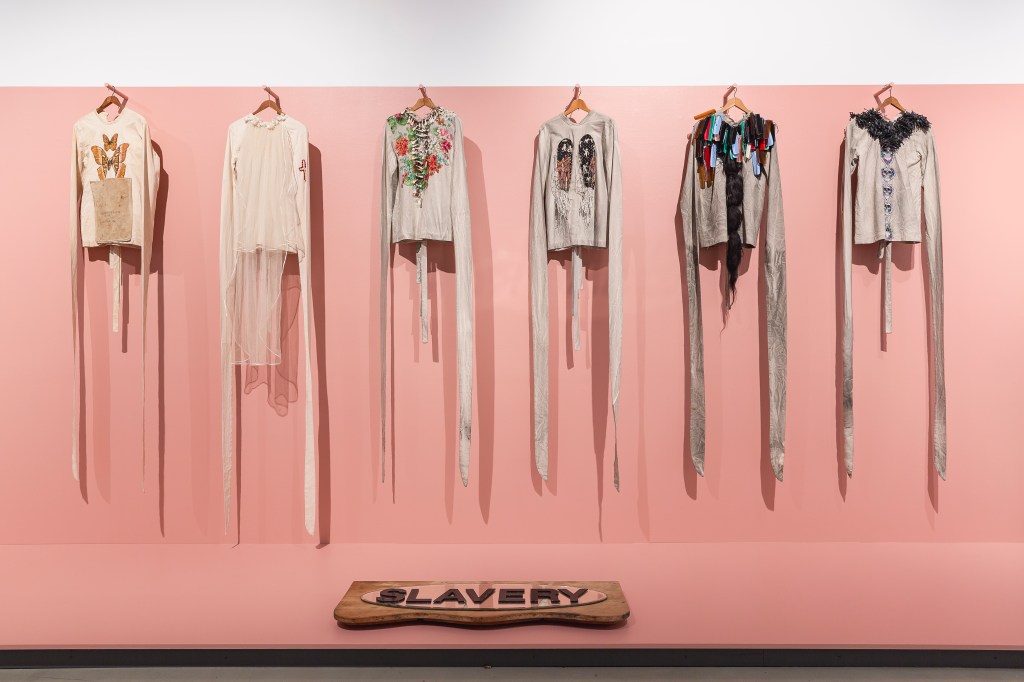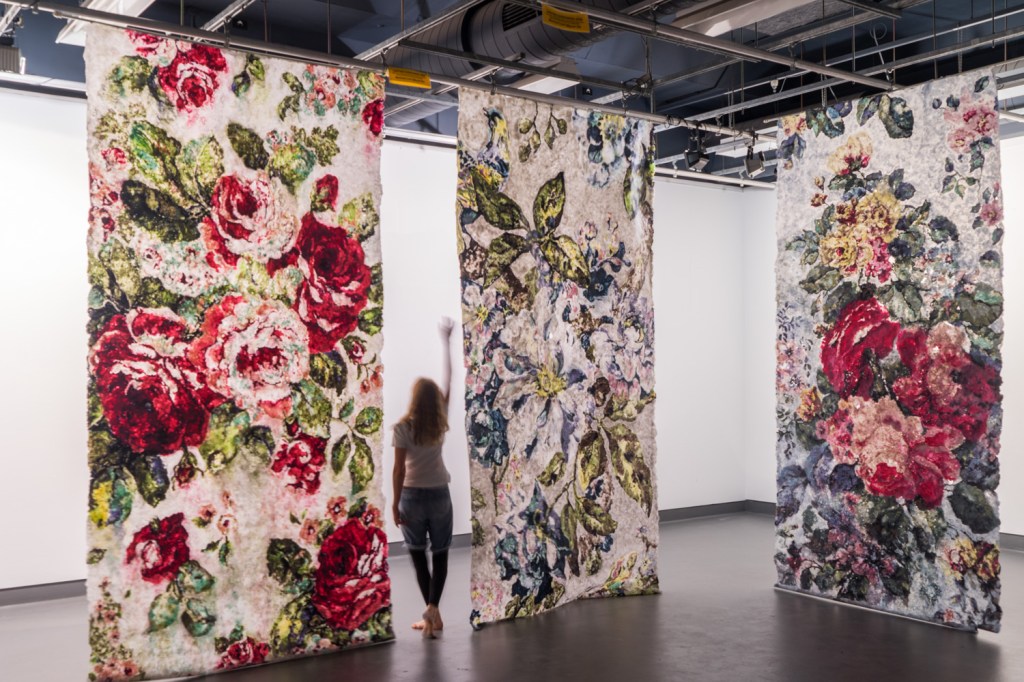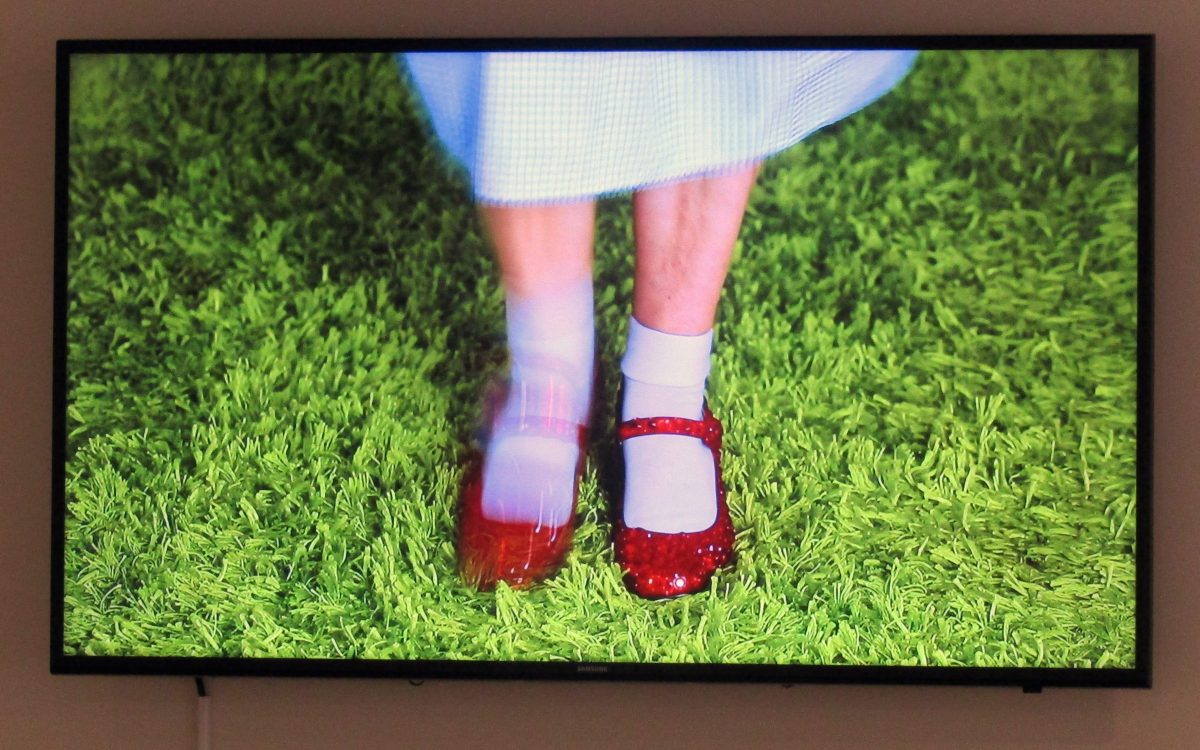The museum and gallery sector has had a terse relationship with vagrancy and homelessness. It would seem that industry proprietors are more likely to hose a homeless person off their steps than pay homage to them through an exhibition.
The Queensland Art Gallery I Gallery of Modern Art (QAGOMA, in Brisbane Australia), however, regularly displays Evicted (1887), an artwork by the British artist Blandford Fletcher. It depicts a mother and daughter, paltry possessions in tow, exiting their former residence with deprecating looks from remaining residents. Former curator of International Art at QAGOMA, David Burnett, says that although social realism ‘fell out of favour’ after the Victorian Era, this painting has significant currency in light of the housing crisis that has befallen contemporary society, and some groups in particular. A 2020 study by the Housing for the Aged Action Group (HAAG) showed that 405,000 women over the age of 45, in particular, were shown to be at risk of homelessness in Australia.
World Homeless Week will run from 8-15th October this year, building global awareness. While arts-based research using photovoice has been used since the 1990s to spotlight the perspectives of homeless women. A prime example was the Health Home Hope project by University of Queensland (UQ) researchers, which culminated in an exhibition of photographs taken by participants in April 2023 at Vacant Assembly. Another participatory art project engaging the homeless will be presented this August to coincide with Australia’s Homelessness Week, dedicated at the Waterside Pavilion by the City of Hobart’s Housing with Dignity Reference Group. Yet, gallery-goers are seldom confronted with this salient, yet apparently unsavoury issue.
While some artworks may not be explicitly about vagrancy, there is historical precedent of homeless artists being celebrated by the sector. The intermittent vagrancy of Vincent van Gogh was a reflection of psychiatric illness as much as poverty. While the transition from the gutter to the Guggenheim made by Jean-Michel Basquiat may reflect a shift in race relations. During his adolescence, the US painter of Haitian and Puerto Rican descent lived out of a cardboard box in a park in New York City. Similarly, Tracey Emin of the YBAs (Young British Artists) experienced homelessness at the height of second wave feminism in the early 1960s.
Each played pivotal roles in piercing the sanctified art spaces of their times. In addition to diversifying the narratives represented, this allowed the introduction of new expressions and a democratisation of the materials sourced to make art. The relevance they achieved strengthened the institutions that, arguably, continue to shun their demographic as an audience.
Whether by happenstance or design, a number of Australian artists are also bringing the plight of homeless women onto hallowed gallery ground.
Karla Dickens Embracing Shadows at Campbelltown Arts Centre

Karla Dickens, ‘Bound’ (2015), canvas straitjackets with mixed media, polyptych – six pieces, dimensions variable. Powerhouse Collection, purchased with funds from the MAAS Foundation 2017. Installation view, ‘Karla Dickens: Embracing Shadows’, Campbelltown Arts Centre, 2023. Courtesy the artist and STATION. Photo: Document Photography.
This year commenced with a significant survey of artworks by Karla Dickens at the Campbelltown Arts Centre, in regional Australia. It featured Bound (2015), a mesmerising series that speaks of entrapment. The six straitjackets are appliquéd with an assortment of objects, from a cow’s teeth to a vintage wedding veil.
The self-proclaimed “displaced” queer Wiradjuri artist tells ArtsHub: ‘The straitjackets focus on domestic violence… One of the works talks to the love of a home being one reason women will stay in a violent relationship… [another] work speaks about financial abuse, staying put for the stake of children and the idea that marriage is a life sentence.’
There is also a straitjacket suggesting addiction is another reason women may stay in abusive relationships. Dickens crafts with an Arte Povera aesthetic to investigate these concepts. ‘On [the] straitjacket looking at addiction, I found all of these rubber King Kong toys from a side show, which I have sewn on,’ Dickens says. ‘[I was] thinking of the saying “a monkey on your back”.’
Dickens left home at the age of 13 and is presently raising a teenage daughter on her own. Her long-standing commitment to the homeless was reflected in a series of portraits exhibited in the 2014 TarraWarra Biennale. Built using baseball masks as foundations, the set of sculptures You Winsome, You Lose Some (2013) culminated out of a collaboration with clients of the Winsome Hotel, aka the Lismore Soup Kitchen. ‘In the 1990s, I did workshops creating murals at a Sydney refugee and drop-in centre [for] homeless women,’ Dickens says. ‘Creating art from found objects is a great tool to introduce to anyone who isn’t cashed up… Art doesn’t have to be a wealthy sport.’
Read: Radical access: the future of access in the arts
Blair Garland There’s No Place Like Home at Pine Rivers Art Gallery
Pine Rivers Art Gallery (Queesnland) is showing There’s No Place Like Home (2023) by artist and curator Blair Garland. The short film was awarded Highly Commended in the Moreton Bay Region Art Prize. For the past two decades, Garland has been facilitating projects with groups diverse in ages, abilities and cultures, and in this instance gives a voice to the homeless.
The multidisciplinary artist and feminist says, ‘We have had three people pitched in a tent in our backyard… One person stayed a whole year.’ On women experiencing homelessness, Garland adds: ‘Recently we provided emergency accommodation for a young Ukrainian woman refugee who had PTSD (post traumatic stress disorder) and was suicidal.’ Within Garland’s own family, her 83-year-old mother was evicted from the rental home she’d lived in for five years.
‘The Airbnb she found is unaffordable for long-term living and in six months she will have to move again,’ Garland tells ArtsHub.
Read: Artist burnout is not a mental health issue – it is a labour issue
For There’s No Place Like Home, Garland recreated an iconic scene from the MGM studio 1939 technicolour classic, The Wizard of Oz. It depicts the protagonist Dorothy clicking the heels of her “ruby slippers”, while chanting the phrase from which the artwork takes its name. Garland donned the red shoes she ‘found in an op shop and glued the sparkles on to them’.
However, in this silent reinterpretation, Dorothy’s sparkly red shoes appear dysfunctional as she repetitiously hits her heels together. The tapping gesture becomes a strained scraping of sequins, dislodging some in the process. ‘In my own life, I have lived in 32 homes so far,’ Garland says. ‘Our homes give us an illusion of permanency… in reality they are fragile structures that are temporary and vulnerable.’
Karen Stone in Rearranged: The Art of the Flower at Museum of Brisbane
In November 2023, the response of Karen Stone to her struggles to secure a home will feature in the group exhibition Rearranged: The Art of the Flower at the Museum of Brisbane. Visitors will be invited to navigate a series of six monumental panels of floral handmade paper. Each is individually titled, with the emotive names including Blue roses… the paralysis of perfection and Roses on teacups… raspberry ripple biscuits. The receptacles of Stone’s memories serve as investigations into stereotypes of femininity and domesticity.
The prominent paper artist says: ‘The flowers became a metaphor for the social conditions and the familial conditions I had as a child.’
She continues: ‘To be happy, because I am a woman, I need to be married… So I always felt there was something wrong, because I didn’t secure a happy relationship and I didn’t have a secure home.’
Read: Housing crisis pushes artists to the brink … of creativity
Stone began developing her unique adaptation of wove papermaking – a European style where pulp is strained using a woven mesh – while undertaking her Bachelor of Visual Arts. She applies the pulp ‘in a painterly way’ to the surface of horizontally suspended silk screens. Over a period of months, Stone makes numerous revisions and repairs to the work before finally peeling off the residual paper.
Her vibrant palettes are built from cotton and linen garments, many sourced from op shops or gifted from friends and family. This material is then macerated, similar to how rags were collected for repurposing into paper in 14th century Italy. For her Master of Visual Art Research, Stone used the Hollander beater machine at the Queensland College of Art to create this series. The labour-intensive process instills a ‘human presence within the paper,’ she says.
Each artwork is a locus of discovery. Over time Stone realised ‘the colours reminded me of homes – the way that the flowers were drawn, the way that the petals unfurled’.
‘It had a certain representation of the 1950s and 1960s,’ she adds. Wallpapers, upholsteries and tea towels belonging to her mother and her grandmother were among her inspirations.
She continues on this notion of the home: ‘To be married and to own your own home … it was based on Robert Menzies’ idea after World War II: the Great Australian Dream.’ The artist believes this concept lives on and manifests in ‘the basic things, [for example] men are paid more than women’, she says. Subsequently women, ‘single, for example, like me [who were not] encouraged to go to university [and as a consequence] had a lot of low-paid jobs, face issues with housing security and being able to afford the rent.’

Giving a voice to women at risk of homelessness
The beautiful barriers fashioned by Stone from rags speak to reasons why a home may prove allusive. The visceral accounts by Dickens through verbal and visual texts convey the additional factors faced by First Nations women and single mothers in Australia. The looped short film by Garland demonstrates difficulties many women can face in breaking this entrenched cycle.
While there is no magic fix to a situation that is purportedly worsening, dialogue about impoverished women within spaces historically reserved for the wealthy, is a step forward.
This article is published under the Amplify Collective, an initiative supported by The Walkley Foundation and made possible through funding from the Meta Australian News Fund.





